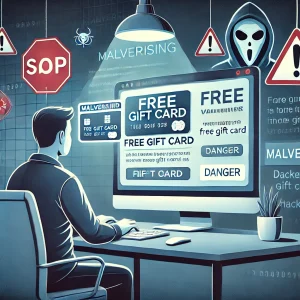Remote access technology has become essential for modern businesses. Whether your employees work from home, connect to the office while traveling, or access critical systems after hours, secure remote access can greatly enhance productivity and flexibility.
However, without proper security measures, it can also open the door to significant risks, including data breaches, ransomware attacks, and unauthorized access to sensitive information.
Here’s what small business owners need to know about securing their remote access technology.
Why secure remote access matters
Remote access allows users to connect to your business’s network or systems from anywhere. While this connectivity is convenient, it also presents a larger attack surface for cybercriminals.
Hackers often target remote access solutions because they can be a weak link in your cybersecurity strategy if not properly secured.
The consequences of a breach can be devastating: financial losses, reputational damage, and even legal penalties for failing to protect customer or employee data.
The good news is that implementing secure remote access methods doesn’t have to be complicated. With the right tools and practices, you can greatly reduce your risk while enabling your team to work efficiently from anywhere.
Key strategies for securing remote access
Use strong authentication methods
Passwords alone are no longer enough to protect remote access. Instead, implement multi-factor authentication (MFA). MFA requires users to verify their identity using two or more factors, such as a password, a smartphone app, or a fingerprint.
This adds an extra layer of security, making it much harder for attackers to gain access, even if a password is compromised.
Deploy a virtual private network (VPN)
A VPN creates a secure, encrypted connection between a remote user and your business network. This ensures that sensitive data, such as login credentials or customer information, cannot be intercepted by hackers.
Ensure your VPN is configured properly and use strong encryption protocols to maximize its effectiveness.
Limit access privileges
Not all employees need full access to all systems. Use the principle of least privilege to limit access based on each user’s specific role. By restricting what employees can see or do within your network, you reduce the potential damage if their credentials are ever compromised.
Keep software up to date
Outdated software can contain vulnerabilities that hackers exploit to gain unauthorized access. Regularly update remote access tools, operating systems, and any third-party applications your business relies on.
Enable automatic updates whenever possible to ensure you don’t miss critical security patches.
Educate employees on cybersecurity
Even the most secure systems can be compromised by human error. Train your employees on best practices for cybersecurity, including recognizing phishing attempts, creating strong passwords, and avoiding suspicious links or downloads. An informed workforce is one of your strongest defenses against cyber threats.
Monitor and audit remote access activity
Use monitoring tools to track who is accessing your network and when. Unusual activity, such as login attempts from unfamiliar locations, can be an early warning sign of a potential breach. Regular audits can help you identify and address vulnerabilities before they are exploited.
The cost of neglecting security
Some small business owners hesitate to invest in secure remote access solutions, viewing them as unnecessary expenses. However, the cost of a data breach or cyberattack often far exceeds the cost of preventive measures. Beyond financial losses, you could face downtime, lost trust from customers, and even regulatory fines.
By prioritizing secure remote access, you’re not only protecting your business but also demonstrating to clients and partners that you take cybersecurity seriously. This can enhance your reputation and give you a competitive edge in an increasingly digital world.
Take action today
If your remote access technology isn’t as secure as it should be, now is the time to act. Consult with IT professionals to evaluate your current setup, identify vulnerabilities, and implement a security plan tailored to your needs.
With the right measures in place, you can enjoy the benefits of remote access without compromising your business’s security.




 Your team is the first line of defense against cyber threats, but without proper training, they may also be your biggest vulnerability. From spotting phishing emails to practicing safe browsing habits, employee cybersecurity training is essential for protecting your business.
Your team is the first line of defense against cyber threats, but without proper training, they may also be your biggest vulnerability. From spotting phishing emails to practicing safe browsing habits, employee cybersecurity training is essential for protecting your business.